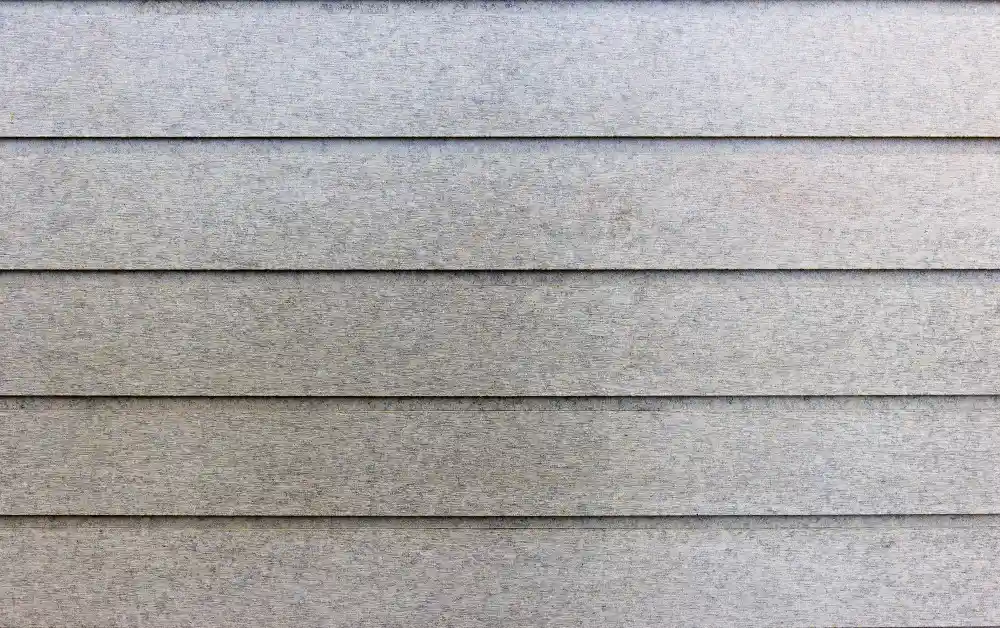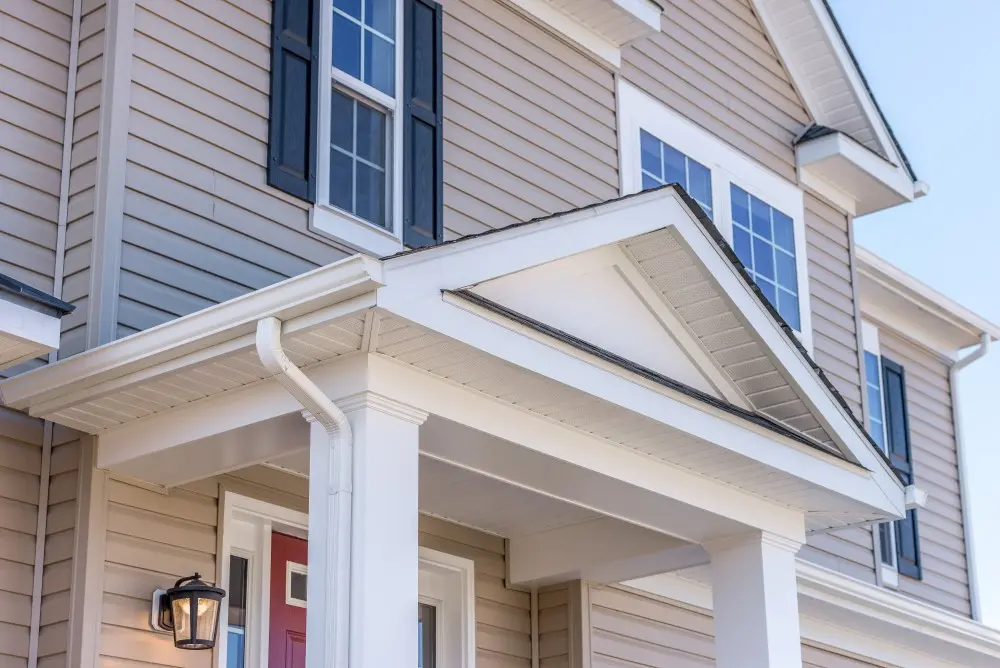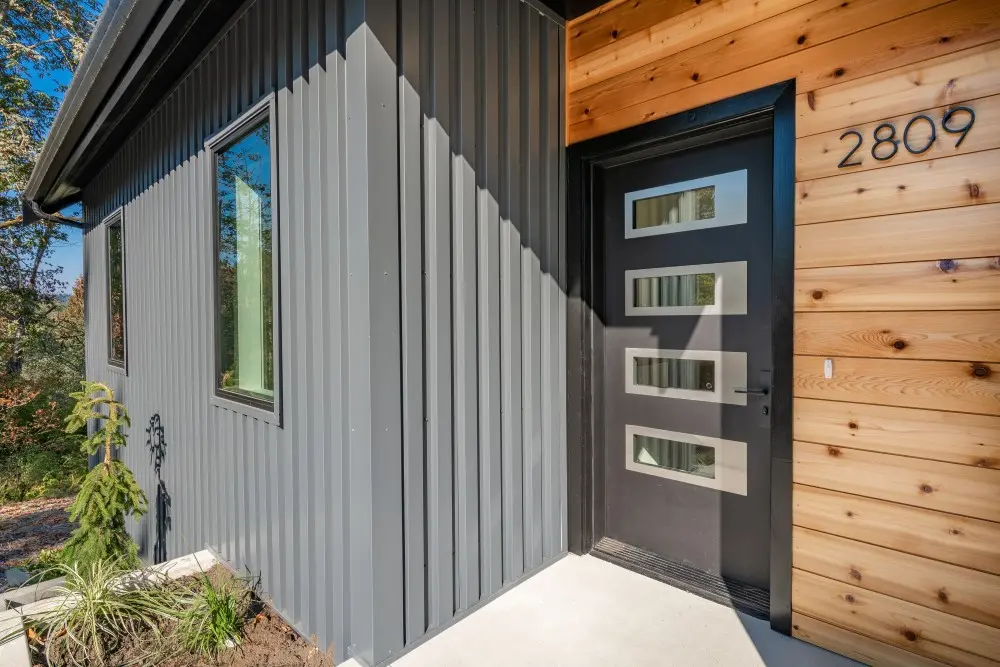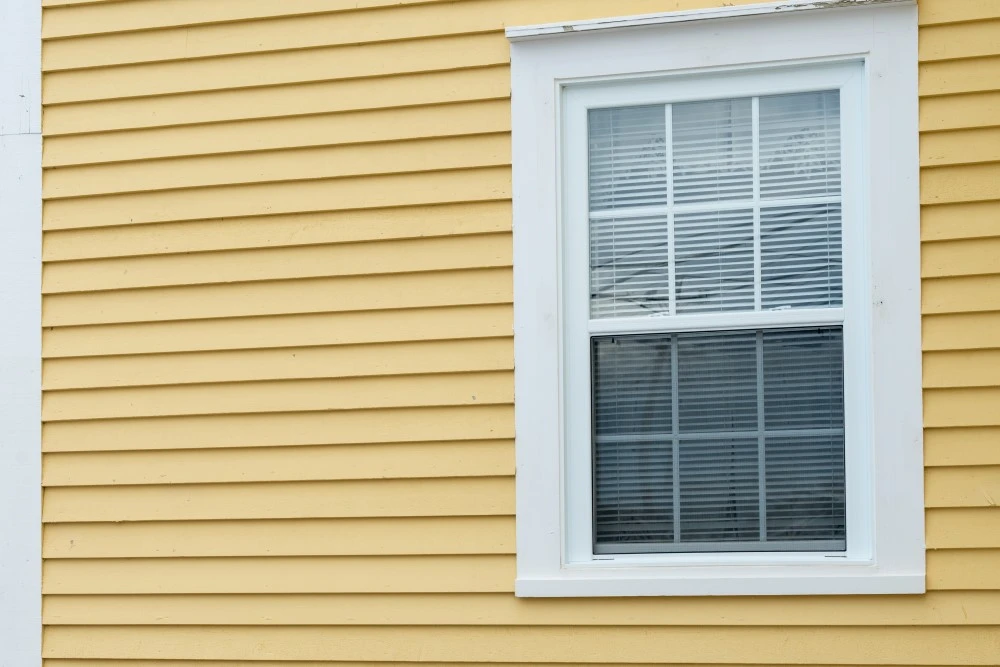Which Exterior Material Is Best for Your House? Chicago Climate Edition.
- 20min
- Updated:11/17/2025
- ByShaunak Ahuja
Choosing the right exterior material for your Chicago home isn't just about looks. Between brutal winters that swing from -20°F to sweltering summers topping 100°F, your siding faces one of the toughest climate tests in the country. Is it up for the challenge?
As a trusted Chicagoland siding replacement company with 75 years of hands-on experience, HX Home Solutions has installed thousands of projects across Lake County and the North Shore. In this guide, we break down the best house exterior material options based on durability, cost, climate performance, and long-term value specific to our region.
What Makes an Exterior Material "Best" for Chicagoland Homes?
There’s no one "best" exterior material, as the answer depends on your specific priorities and how well it stands up to Chicago's demanding weather patterns.
- Weather resistance: Chicago's climate is particularly harsh, with temperature swings exceeding 120°F between January and August. Freeze-thaw cycles cause expansion and contraction that crack weak materials, while high summer humidity promotes moisture infiltration and mold growth.
- Lifespan and durability: Materials range from 20-year vinyl to lifetime stone veneer. Cold climates like ours accelerate wear on materials not engineered for extreme temperatures.
- Maintenance requirements: Some siding materials need repainting every 8-10 years, while others only need occasional cleaning for 50+ years.
- Initial investment vs. long-term value: Lower upfront cost doesn't always mean better value. Factor in replacement costs, maintenance, energy efficiency, and resale value.
- Fire resistance and safety: Class A fire-rated materials like fiber cement can reduce homeowners insurance premiums by $200-$400 annually while protecting your home.
- Energy efficiency: Insulated vinyl siding and properly installed fiber cement improve thermal performance, cutting cooling costs in summer and heating bills in winter.
The right choice balances these factors with your budget and aesthetic preferences for modern homes' exterior materials that perform.
The Top Exterior Materials for Chicago Homes
Fiber Cement Siding (James Hardie)

Fiber cement delivers the best combination of durability and aesthetics for Chicago homeowners.
It’s a composite material that blends Portland cement, sand, and cellulose fibers into thick, rigid panels that handle extreme temperatures. James Hardie's Engineered for Climate technology specifically addresses Chicago's freeze-thaw cycles and high humidity. ColorPlus Technology bakes on factory finishes that resist fading for 15+ years without repainting. Fiber cement benefits include superior moisture resistance and dimensional stability that prevents the warping commonly seen in materials like wood and vinyl.
Average cost: $8-$12 per sq. ft. installed/$20,000-$30,000 for a typical 2,500 sq. ft. home
Pros:
- 50+ year lifespan outlasts nearly all other siding materials. According to industry data, fiber cement maintains structural integrity for 30-50+ years, even in harsh climates.
- Fire-resistant with Class A rating (Flame Spread 0-25). Non-combustible construction provides essential protection and may reduce insurance premiums.
- Low maintenance with minimal upkeep needed. Unlike wood, it resists rot, pests, and weather damage without frequent repairs.
- Highest ROI at 88% cost recouped. The 2024 Cost vs. Value Report confirms fiber cement delivers exceptional resale value.
Cons:
- Higher upfront cost than vinyl siding. Initial investment runs $3-5 more per square foot installed.
- Professional installation needed. The material's weight and proper fastening techniques demand experienced contractors.
- Periodic repainting needed. While durable, painted fiber cement requires refreshing every 10-15 years, which costs approximately $2.50 per square foot.
Important note: James Hardie's 30-year non-prorated warranty protects your investment without depreciation over time. This transferable warranty adds resale value and buyer confidence that cheaper materials can't match.
Vinyl Siding (Mastic & Premium Brands)

Vinyl continues to be the most budget-friendly choice that still performs well in Chicago's challenging weather.
Vinyl has come a long way, and it has evolved dramatically since the 1970s. Premium brands like Mastic feature thick profiles (0.46"+) with reinforced construction, fade-resistant pigments, and lifetime warranties. One bonus is that the PVC composition won't rot, corrode, or absorb moisture. Vinyl performs exceptionally well against Chicago's wet springs and humid summers. However, vinyl siding’s lifespan shows it can become brittle when temperatures plunge below -10°F, leading to potential cracking. High-quality insulated vinyl siding is a simple way to add energy efficiency while improving impact resistance.
Average cost: $4-$7 per sq. ft. installed/$10,000-$17,500 for a typical 2,500 sq. ft. home
Pros:
- Most affordable for complete replacement. Vinyl siding costs run 40-50% less than fiber cement.
- Zero painting is required. The color is baked through the material, eliminating one major maintenance task.
- Moisture-proof and rust-resistant. Water won't penetrate PVC, preventing the rot and corrosion that plague wood and metal.
- Lifetime warranty from manufacturers like Mastic. Quality brands back their products with transferable coverage.
Cons:
- Can crack in extreme Chicago cold. Temperatures below -10°F make vinyl brittle and vulnerable to impact damage.
- Color fading over time. Even fade-resistant formulations show noticeable dulling after 15-20 years of UV exposure.
- Lower resale value boost. While 80% ROI is respectable, it isn’t as impressive as fiber cement's 88% cost recovery.
Engineered Wood Siding (LP SmartSide)
LP SmartSide offers middle-ground pricing with authentic wood aesthetics and better durability than cedar.
LP SmartSide uses wood strands treated with zinc borate for termite and fungal resistance. The SmartGuard manufacturing process adds moisture barriers and protective coatings. The result is a genuine wood grain texture that accepts stain or paint beautifully. Comparing options shows LP performs better than natural wood in Chicago's humidity and freeze-thaw conditions. The lighter weight makes installation easier than fiber cement, while maintaining good impact resistance.
Average cost: $6-$9 per sq. ft. installed/$15,000-$22,500 for a typical 2,500 sq. ft. home
Pros:
- Authentic wood look and feel. Unlike vinyl's plastic-like appearance, engineered wood delivers beautiful natural wood aesthetics.
- Impact-resistant construction. Thicker than vinyl, with composite wood density that resists hail and debris better.
- 30-year warranty with proper maintenance. LP backs their product when installed and maintained correctly.
Cons:
- Requires repainting every 8-10 years. The finish coat needs regular maintenance to prevent moisture from seeping through.
- Moderate fire resistance only. Class C rating (Flame Spread 76-200) offers minimal protection compared to fiber cement.
- More maintenance than vinyl or fiber cement. Regular inspections and touch-ups prevent moisture damage.
Metal Siding (Aluminum & Steel)

Metal delivers the longest lifespan with contemporary styling, perfect for the exterior of modern homes.
Aluminum and steel both offer 50+ year durability with virtually zero maintenance. Powder-coated finishes resist rust, corrosion, and UV fading. Plus, metal won't burn (Class A fire rating), rot, or attract pests like woodpeckers.
Modern profiles create clean lines that complement contemporary architectural styles instead of looking industrial. Metal also handles Chicago's freeze-thaw cycles flawlessly, with no expansion or contraction issues. Insulated metal options are energy efficient and reduce exterior noise.
Average cost: $7-$12 per sq. ft. installed/$17,500-$30,000 for a typical 2,500 sq. ft. home
Pros:
- 50+ year lifespan requires minimal upkeep. Once installed, properly fastened metal siding lasts generations.
- Fire-resistant and pest-proof. Non-combustible construction earns Class A ratings while repelling all pests.
- Recyclable and eco-friendly. At the end of life, metal is 100% recyclable with high scrap value.
Cons:
- Can dent from hail impacts. Large hail or flying debris may dent panels, though properly installed systems minimize this risk.
- Limited architectural styles. Metal suits modern and contemporary homes, but looks out of place on traditional colonials or craftsman bungalows.
Stone Veneer (NorthStar & Premium Brands)

Are you looking for luxury curb appeal with lifetime durability that outperforms all organic materials? Stone veneer is a great option.
Manufactured stone veneer replicates natural stone's texture and appearance at a lower weight and cost. The cast stone process creates realistic variations in color and profile. Excellent insulation properties and thermal mass reduce energy costs year-round.
Stone veneer combines beautifully with fiber cement or brick siding for stunning accent walls that boost a home's curb appeal. It handles Chicago's extreme weather better than any material, as it’s immune to freeze-thaw damage, rot, pest damage, and UV fading. Popular for Tudor, craftsman, and luxury home styles across areas like Lake Forest, Hinsdale, and Barrington.
Average cost: $12-$25 per sq. ft. installed/$30,000-$62,500 for a typical 2,500 sq. ft. home
Pros:
- Premium luxury appearance. Stone conveys quality and permanence that dramatically improves curb appeal.
- Lifetime durability without degradation. Inorganic composition means it won't rot, warp, fade, or deteriorate.
- Excellent insulation value. Stone's thermal mass moderates temperature swings and improves energy efficiency.
Cons:
- Highest initial investment. Material and specialized masonry labor drive costs 2-3x higher than vinyl.
- Complex installation required. Proper installation demands experienced masons familiar with moisture management and proper fastening.
Material Comparison: A Side-by-Side Analysis
Use this quick-reference table to compare all five outside house wall materials across the factors that matter most to Chicago homeowners.
"Chicago Climate Rating" reflects proven performance against freeze-thaw cycles, moisture resistance, UV exposure, and extreme temperature tolerance. ROI percentages based on 2024 Cost vs. Value Report data for fiber cement (88% national) adjusted for local market conditions and installation quality factors.
What's the Cheapest Material for Exterior Wall Finish?
There’s no doubt that vinyl siding is the most affordable option for your home's exterior walls. At $4-$7 per square foot installed, vinyl makes a complete 2,500 square foot home replacement possible for anywhere from $10,000-$17,500. The cost advantage comes from simpler manufacturing (PVC extrusion), lightweight panels that can be installed quickly, and wide availability from multiple suppliers.
However, "cheapest doesn't mean best value" is critical here. For example, compare 30-year total ownership: vinyl may need complete replacement around years 25-30, while fiber cement lasts 50+ years. The trade-offs matter, as costs may be lower upfront but can result in potentially lower resale value (80% vs. 88% ROI) and less durability in cold climates.
How to Choose a Material Based on Your Home Style
Your home's architectural style should guide the material you choose for the best aesthetic results and neighborhood compatibility. Here are some of our recommendations.
- Colonial and traditional homes: Fiber cement vs. vinyl siding both work beautifully in classic lap profiles. Choose traditional colors like white, gray, navy, or beige. Fiber cement delivers more authentic shadow lines.
- Craftsman and bungalow styles: Board and batten siding or wider lap profiles showcase the deep eaves and textured details. Engineered wood or fiber cement with woodgrain texture complements the aesthetic of natural materials.
- Tudor and european designs: Stone veneer accents on gables and first-floor wainscoting paired with fiber cement lap siding above create authentic period character. Mixing materials adds the dimensional interest these styles demand.
- Mid-century modern and contemporary: Smooth fiber cement panels or metal siding in bold colors (charcoal, deep blue, bronze) emphasize clean lines. Vertical orientation and minimal trim details maintain the modern aesthetic.
- Ranch and prairie style: Horizontal lap siding in earth tones (tan, brown, sage green) respects the low-profile, nature-integrated design. Fiber cement or quality vinyl work equally well.
If you can’t decide, you can always mix materials strategically. For example, stone veneer wainscoting with fiber cement lap siding above adds depth and curb appeal. Don’t forget to factor in neighborhood aesthetics, too. Ultra-modern metal might not fit historic Lake Forest streets, while premium fiber cement works everywhere from Libertyville to Naperville.
Make the Smart Choice for Your Chicago Home
When you’re selecting the best exterior material for your house, you’ll want to balance Chicago's climate challenges, your budget, maintenance preferences, and aesthetic goals. Fiber cement offers the best overall value for most Chicagoland homeowners with 50+ year durability and 88% ROI, vinyl provides budget-friendly reliability at $10K-$17K complete replacement, and stone veneer delivers luxury curb appeal that boosts high-end home values.
If you’re looking for a trusted partner in this process, you’re in the right place. HX Home Solutions brings 75 years of Chicagoland home remodeling expertise to every project. Our team knows which materials perform in your specific microclimate and neighborhood. Contact us today for a free consultation and detailed estimate for your siding replacement project — no pressure, just honest guidance from Chicago's most trusted remodeling experts.





